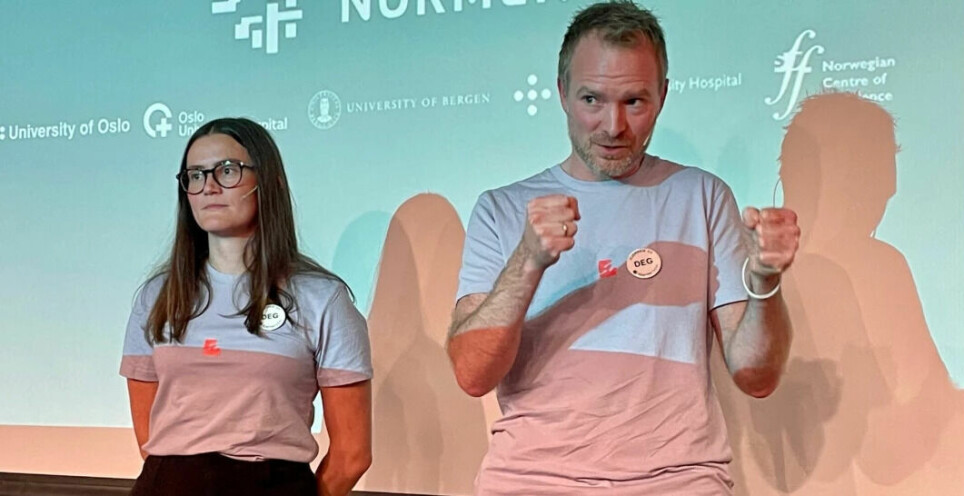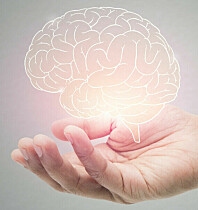
Brains of schizophrenia and bipolar patients are older than their age would suggest
A new research method shows that the connection between mental illness and poor brain health is stronger than researchers were aware of.
It has long been known that people with brain disorders often have an older brain than they should have, given their age. People with dementia, for example, fall into this category.
Diseases like multiple sclerosis that affect younger people, who should have a young brain based on their age, can make the brain older than the patient's chronological age.
But recently, a new method has shown that mental illness also affects brain health, “perhaps to a much greater extent than we’ve previously been aware of,” says Irene Voldsbekk.
Voldsbekk is a psychologist and research fellow at the Norwegian Centre for Mental Disorders Research (NORMENT).
Two diseases – so far
People with schizophrenia and bipolar disorder also have an older brain than they should have, given their age.
“A lot of research is being done on other mental disorders as well. But for now, we can state that these two disease groups have an older brain than their chronological age,” says Voldsbekk.
At the same time, researchers find large individual differences. While some patients show significant deviations, others show no or only small differences compared to healthy individuals.
“So understanding these individual differences is important in order to understand why some individuals become mentally ill and others don’t,” says the neuroscientist.
Chicken and egg situation
Schizophrenia and bipolar disorder are diseases that affect people early in life.
But researchers are not sure whether the chicken or the egg comes first in this instance.
It could be that the disease does something to the brain. But it may also be that the disease gets in the way of the development that should take place during this important period of life. Or that lifestyle comes into play.
“It could be that the disease does something to the brain. But it might also be that the disease gets in the way of the development that should be taking place during this important period of life. Or that lifestyle comes into play,” says the neuroscientist.
Childhood and adolescence are the times in our lives when our brains change the most.
The researchers can use the brain age method to understand what normal development looks like in children and young people and what the signs are that something is starting to go wrong.
Researching vulnerability
In an early phase of life, having a younger brain is not necessarily a good thing.
It can be a sign of delayed development, says Voldsbekk.
A younger brain can therefore also be a sign of mental illness.
“In our research group, we see that children and young people with more psychological problems have a younger brain compared to others,” says Voldsbekk.
The research to find out whether something in our development makes some people more vulnerable to mental health problems is going on quite intensively, she says.
Uncovering what happens in the brain
The term ‘brain age’ keeps popping up in social media these days. Several apps claim to be able to reveal your brain age after you answer a few simple questions.
“Unfortunately, these apps can’t give you a good answer as to how old your brain is,” says Einar August Høgestøl.
However, he and the other brain researchers at NORMENT can. Høgestøl is an associate professor at NORMENT and a doctor at Oslo University Hospital.
If Høgestøl or Voldsbekk were to take a look at an MRI image of your brain, they could quickly see whether you have a younger or an older brain than you should have.
Building up large databases
In recent years, research teams in many countries have built up large databases of MRI images. Norwegian researchers can also access these and use them in their research.
NORMENT has over 55 000 images available for use.
Norwegian researchers have helped to develop a program that has learned to recognize different patterns in the brain. Models are then made based on these.
A random image of a brain taken with an MRI is inserted into the model.
Within a few minutes, the researchers receive an answer as to how old the brain of the person they are examining is.
Good marker for brain health
This technology has proven to be a good marker for brain health and has become a widely used tool in research.
“Ideally, there should be harmony between how old you really are and how old the MRI image of your brain says you are,” says Høgestøl.
“If you’re 55 and the machine tells you that you’re 64, then you’ve either lived a bit on the wild side or you have an illness in your brain,” says Høgestøl.
However, there isn’t always a match here.
Hope to help patients
The researchers hope that they can use the method to adapt treatment to each individual patient with poor brain health in the future.
Today, for example, a patient with schizophrenia is often diagnosed in their late teens or early twenties. Then the problems increase over many years.
If researchers can find out more about the causes of mental illness at an early stage, they may be able to adapt good and individual treatment for patients before they develop a serious illness.
“We imagine that if we can address the disorder early and treat schizophrenia from an early age, we’ll be able to provide better treatment. This would then hopefully mean that we’ll see less of a gap in brain health between these folks and healthy people,” says Voldsbekk.
Attitude shifting
We have known from the past that people with mental disorders – at the group level – have brains that differ from healthy brains.
Measuring brain age brings this out even more clearly, says Voldsbekk.
If you’re 55 and the machine tells you that you’re 64, then you’ve either lived a bit on the wild side or you have an illness in your brain.
“Several indicators point to the disease schizophrenia appearing early in life. These findings can support such an interpretation. We work out of a hypothesis that a number of things early in life place people on a path of risk,” she says.
Voldsbekk believes the method can also influence attitudes towards this and other mental illnesses.
An MRI image that shows changes in the brain is something concrete. It can show that mental illness is something we have to take seriously – and also, that it isn’t the patient who’s made mistakes that have led to illness.
“An MRI image clearly shows that if you have a mental illness, just getting your act together doesn’t solve the problem,” says the researcher.
———
Read the Norwegian version of this article at forskning.no
------



































